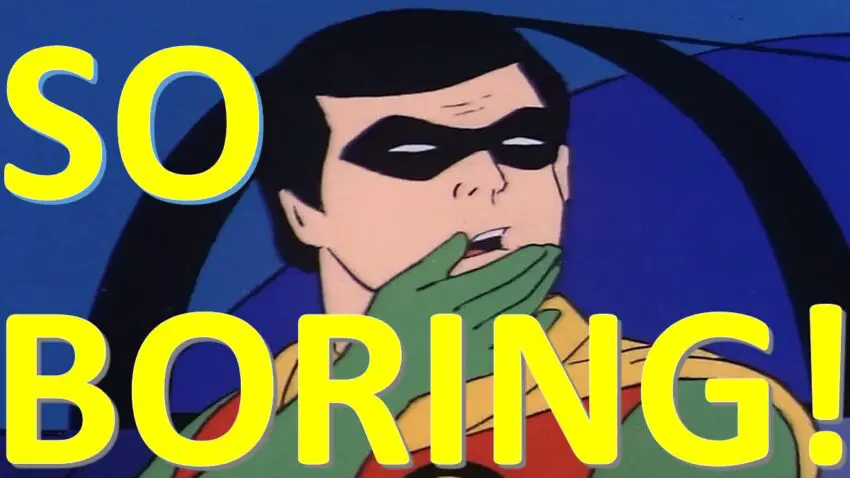I review, co-review, and edit reviews for a lot of comics every single week. Inevitably, exposure to enough comics means you see common mistakes comic creators make that negatively affect the final product. One of those common mistakes is creating forgettable characters, so today, we’re going to look at what makes comic characters memorable.
Before we dig in, I’d be foolish to say I know everything there is to know about writing, but I know enough to draw knowledge from my betters, so on the topic of character creation, I look to acclaimed scriptwriter Aaron Sorkin and his famous 7 Tips For Creating Memorable Characters. In this case, we’re going to adjust the list specifically for comics.
And to address the opposite point, if you’re actively working on or planning to write a comic, check to see if your characters match most or all of these points. If not, there’s a good chance your character(s) will be as forgettable as dry toast on an average Tuesday.

Know their motivations and make them obvious
Readers remember comics when they can relate to what’s happening in a way that makes them feel something. Before a reader can develop an emotional connection to a comic, they have to understand what’s happening.
You can’t feel sad or happy or angry toward a character if their actions appear random, so you dispel the “randomness” of a character’s actions by clearly establishing their motivations.
Were the main character’s (MC’s) parents killed in Crime Alley in a senseless act of violence? Was your MC spurred to take on great responsibility after his uncle was killed by a robber the MC could have stopped? Make the characters’ actions make sense by showing what motivates them.
Make their actions relatable
This point goes hand-in-hand with motivations because once a reader knows what drives an MC forward, their actions have to be consistent with how the MC internalizes their motivations. When the reader sees and understands the MC’s actions, even when they don’t agree with those actions, the readers “get it.”
Batman dresses up like a bat and fights crime. You may think he’s cuckoo bananas for doing what he’s doing but you can get how and why, given all the right conditions, someone may go down that path. If the reader can understand an MC, they can relate to an MC, even if they don’t agree with the MC’s choices.
Have a moral compass
Once an MC is on the path of the story’s plot, it helps tremendously if the MC has a clear moral compass because the moral compass is the ruleset the MC uses to make every decision throughout the story.
Continuing with the Dark Knight’s example, Batman famously has a “no killing” rule. In the course of fighting crime, Batman is continually challenged with getting the job done while sticking to his rule, especially when it comes to the Joker. And that’s why the moral compass is so important. A comic writer can create conflicts and villains that directly force the MC to violate their moral compass, which is a tailor-made opportunity for memorable conflict and drama.
The moral compass tells you exactly where that character stands on a myriad of issues, giving them depth, clarity, and purpose during even the most polarizing dilemmas.
Realistic is boring
We’re talking about comics here. Not biographies or documentaries. To create the conflict and drama necessary to make the character’s actions and dialog interesting, you have to give the character’s personality a little more punch and exaggeration than you would find in the average person in reality.
If your intent is to create a character that’s grounded, do so in moderation. Too grounded is boring, and boring is the biggest no-no in any comic and a surefire way to make your character forgettable.
“But what if my character is supposed to be grounded and ordinary?” Well, make your character unusually boring and ordinary. Make that character the walking, talking embodiment of beige.
Let them struggle
A character who never stumbles, struggles, or fails is boring. It’s through struggle that a character grows, evolves, and achieves the goals of their journey.
There’s not enough space to get into the particulars of the phrase “Mary Sue,” but the primary difference between a character readers like and dislike is when the characters are faced with struggle and failure.
Make them sound natural
This is a big one. In an effort to make a character sound “smart” or from a particular country or “urban” or “rural” or “younger” or “older,” the writer over-peppers the dialog with turns of phrases and slang pronunciations to give the character a distinctive voice.
Done in moderation, a character with a certain way of speaking is fine, but don’t overdo it. We see it all the time when the dialog sounds stiff, clunky, and forced, and it’s a chore to get through.
The easiest way to tell if you’ve got it right or not is to read the dialog out loud. If you sound like a real person, it’s probably okay. If you sound like an A.I. chatbot with a speech impediment chuck it out. Bad dialog is an automatic turnoff for most readers, and they’ll want to forget your character intentionally just to get them to shut up.
Give the artist space to act
How many times have you heard the axiom “Comics are a visual medium?” I’ve heard it a lot because it is. The script is just the first step, so it’s up to the artist to let the characters act out your script, just like flesh and blood actors act out a scene on film.
The artist, assuming they’re a good, storytelling artist, will know how to take a statement of anger and show that anger on the character’s face. Don’t force the artist to rely solely on the dialog to express anger. The same goes for grief, joy, greed, and all the rest.
Communicate the emotional beats you want, but give the artist room to express those emotions through gestures, body language, and facial expressions. A reader will get a full picture of what the character is feeling.
If the character looks visually stiff and subdued at all times because the script doesn’t allow room for the artist to visually communicate those emotions, there’s no life or energy to the character. The reader isn’t going to relate to the character or remember any “Whoa!” moments when a scene should hit hard.
There you have it.
This list isn’t the end all be all of comic character creation, but it’s a good foundation. Check your characters against this list before you send the script for art. You’ll be glad you did.
We hope you found this article interesting. Come back for more reviews, previews, and opinions on comics, and don’t forget to follow us on social media:
If you’re interested in this creator’s works, remember to let your Local Comic Shop know to find more of their work for you. They would appreciate the call, and so would we.
Click here to find your Local Comic Shop: www.ComicShopLocator.com
As an Amazon Associate, we earn revenue from qualifying purchases to help fund this site. Links to Blu-Rays, DVDs, Books, Movies, and more contained in this article are affiliate links. Please consider purchasing if you find something interesting, and thank you for your support.

